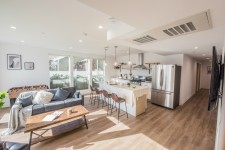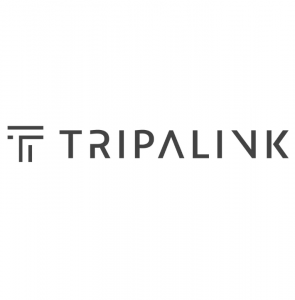How Was Tripalink Able to Achieve a 98% Occupancy Rate in Their Co-Living Properties During the Pandemic?

LOS ANGELES, September 14, 2020 (Newswire.com) - Most real estate owners aim to have a 98% occupancy rate during a normal year, however, the challenges of the pandemic and its economic implications have made a high occupancy rate seem unattainable.
Donghao Li, the founder and CEO of Tripalink, a four-year-old co-living company with over 4,000 bed spaces under management, reported an occupancy rate of 98% for 2020, which is only 1.5% lower than its average annual occupancy rate.
Tripalink offers affordable co-living spaces without sacrificing quality.
Tripalink’s co-living properties are fully furnished and have private bedrooms, modern design, in-unit laundry, a weekly cleaning service, and utilities included in the rent.
Donghao Li describes their method, saying, “Tripalink’s model of co-living emphasizes quality while minimizing cost. We provide private bedrooms, vibrant amenities, and community perks and events to improve the overall living experience.”
Based on the rates shown on the Tripalink website, a tenant in Los Angeles can rent a fully furnished private bedroom for as low as $800 without any hidden fees. According to RentJungle, the average rent of a two-bedroom apartment is $3,144, and split between two people is $1,572. That is a savings of $772, without sacrificing quality.
Multi-channel marketing and personalized leasing process based on algorithms are the backbone of high occupancy.
Prior to the pandemic, Tripalink had found a niche with international students. They had started to slowly expand their demographic to American college students and young professionals because they have similar needs.
Tripalink realized the threat that COVID-19 posed much earlier than the average American company. They saw that Asian countries had started a travel ban and started to realize that the U.S. would probably do the same soon, which might cause their international residents to return to their home countries. Tripalink shifted their marketing strategy to focus more on American young professionals and invested in a multi-channel marketing strategy that included paid search, SEO, and social media ads. They also adjusted their pricing to be more market-oriented. These increased the number of interested tenants by 45%.
Tripalink’s leasing team labels their pool of potential tenants in order to give them the best rental options for their budget and location preferences. These are based on internal algorithms. Interested tenants receive a response from Tripalink within seconds of reaching out. This automatic system has saved Tripalink a lot of unnecessary costs in the leasing and marketing process and increased the conversion rate to 33%.
Boosting resident retention rate through community events.
Although community building is not common in the real estate industry, Tripalink has found it beneficial in retaining tenants. According to Donghao Li, due to COVID-19, the retention rate hasn’t been increasing as fast, but it is still 70%.
Tripalink held various community events and introduced different perks to enhance the bond within its community. The most popular events in 2019 were the Yacht Party, Game Night and Wine Tasting Workshop.
In response to COVID-19, Tripalink moved events and perks online by offering discounts of online grocery shopping, free online yoga classes and so on. They also provided masks and hand sanitizers to their tenants and installed a cleaning station at the entrance to the building with disinfection products to help residents stay healthy.
These events create a sense of camaraderie and connection within the Tripalink community. They improve the tenants’ overall living experience and ensure a high lease renewal rate.
Source: Tripalink
